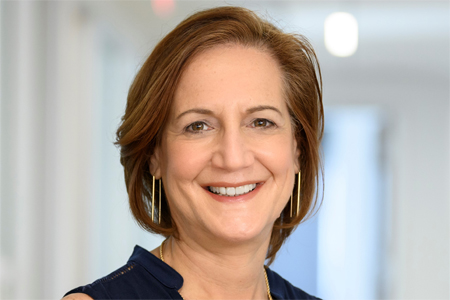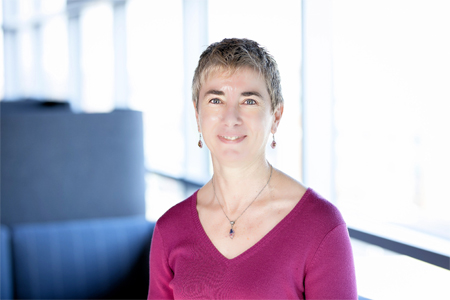Big CDMOs Back On Emerging Biopharma Radar

By Louis Garguilo, Chief Editor, Outsourced Pharma

Are the bigger, established CDMOs making a new play for emerging biopharma customers?
We’re not suggesting there haven’t been smaller clients at large CDMOs. However, COVID-19 induced supply-chain dynamics (and pricing) had the big providers concentrating on a different set of customers.
Even before that, emerging fields (i.e., cell and gene) were generating new developers requiring a different set of (flexible) services, and new partnership models Big CDMOs were not offering.
This has provided opportunities for emerging service providers that better match up.
But once again, we’re sensing the winds of change.
A first hint came in the small-molecule space (see: How A Virtual Biotech Lands A Large CDMO). Steve Carchedi, CEO, Allarity Therapeutics, described how his company has successfully outsourced to a major CDMO.
Paul Lammers, CEO, Triumvira Immunologics, told us of an intriguing relationship with a major CDMO to support his autologous cell-therapy program (see: No Joke: A Cell-Therapy Start-Up Meets A Super-Sized CDMO).

When they said they believe they’ve found the near perfect fit, I suggested it wasn’t one of the larger, name-brand CDMOs.
I was wrong.
Big Vs. Big

Although led by seasoned professionals, Boston Pharmaceuticals is an emerging, virtual organization; that two of the largest CDMOs rose to the top of the selection list is noteworthy.
More instructive is how subsequently CDMO-A and CDMO-B began to separate themselves after an initial period of engagement.
Both offered the “one-stop-shop” pitch. Readers will recall over the years we’ve thoroughly discussed the merits and demerits of this model.
Theoretically, every service a biopharma needs in one place sounds nirvana-like.
In practice, we hear repeatedly, it’s much less idyllic.
Moreover, recently this garden has been walled off to smaller customers, as Big CDMO chased COVID customers and more established clientele.
That notwithstanding, says Choquette, “Once I started looking to outsource all the work we had on a critical path for the assets we’d acquired, I knew if we decided on a number of CDMOs, this was going to be a massive undertaking for us. We sat down and said, ‘Maybe we should take a different approach. Find one CDMO that wants to work with us in a real partnership scenario.’”
There were prerequisites.
Choquette and Beck coveted an established CDMO with a track record in biologics particularly. “In this case,” explains Beck, “we didn't want to take any chances with an upstart or small CDMO. We really wanted to set ourselves up for success.”
Both the larger CDMOs they spoke with had the manufacturing fit, but, says Choquette, “We needed the process development piece – that early-phase engagement of their teams.”
That’s where CDMO-A and CDMO-B began diverging. CDMO-B appeared less invested in the development work Boston Pharmaceuticals – and most all emerging organizations – need to attain liftoff.
It became obvious CDMO-A was the better choice. “They take pride in their early development work and that part of their business,” Choquette says.
There was another component to the fit, adds Beck.
“For us, being located in the U.S. was important. We are a lean organization; we have three people each in our CMC and sourcing groups, and a small quality organization. Trying to communicate and conduct technology transfers and audits from afar on especially complex biologics – and in very different time zones – was not going to work.
“It becomes overwhelming,” she adds drawing on years of prior experiences. “That versus having somebody in the middle of the U.S.”
She continues: “We're not talking about one biologic; we have three programs, and a potential fourth. There's a lot of work going on. We needed somebody who could help us manage it all. That's why the smaller CDMOs were less desirable; they have less capacity, and don't have the resources, including for that project management piece.”
Price, Material, But Timelines?
Spoiler alert: “CDMO-A did not come in with the highest price,” Choquette says.
“They were well within the range of the five or six top CDMO candidates, and,” she says, “they did work with us on price a bit. They didn't come down to our projected estimated cost, but we made some progress.”
A second key budgetary factor was described by Beck in an earlier editorial (Inflation Bites Biopharma In The Outsourcing Budget.) CDMO-A didn’t require the signing of contracts for anticipated production slots many months in advance, and including severe penalties.
“When we can work with a CDMO that allows us to use a letter-of-intent or something similar, and they don't push us to fully commit to lock down a slot so far in advance, it’s huge,” she said.
One non-budgetary factor of importance: the service provider would need to lend material support.
“We've had challenges with raw materials not being available,” Beck explains. “But we’ve worked with our CDMOs to find substitutes. I'm so big on this point.”
As an example, when a resin used in early development became unavailable, Boston Pharmaceuticals sought to leverage their CDMO’s expertise.
“They have a huge supply chain for raw materials,” she explains. “We asked, ‘What would you recommend?’ They got their raw-material folks on top of it, and were a big resource for us. They worked with us on what needed to be done to minimize any impact on the drug substance.”
Beck also says CDMO-A wasn’t projecting timelines further out than other CDMOs, including the much smaller – and assumed nimbler – service providers.
Furthermore, CDMO-A was willing to work with Boston Pharmaceuticals regarding all their interrelated timelines – including for tightly scheduled animal studies and work in progress at CROs.
All told, she and Choquette got what they were looking for:
- services bundled in one location
- an early-development focus
- competitive pricing
- a flexible format to deliver in a timely manner
At least one Big CDMO is back on the emerging biopharma’s radar.
